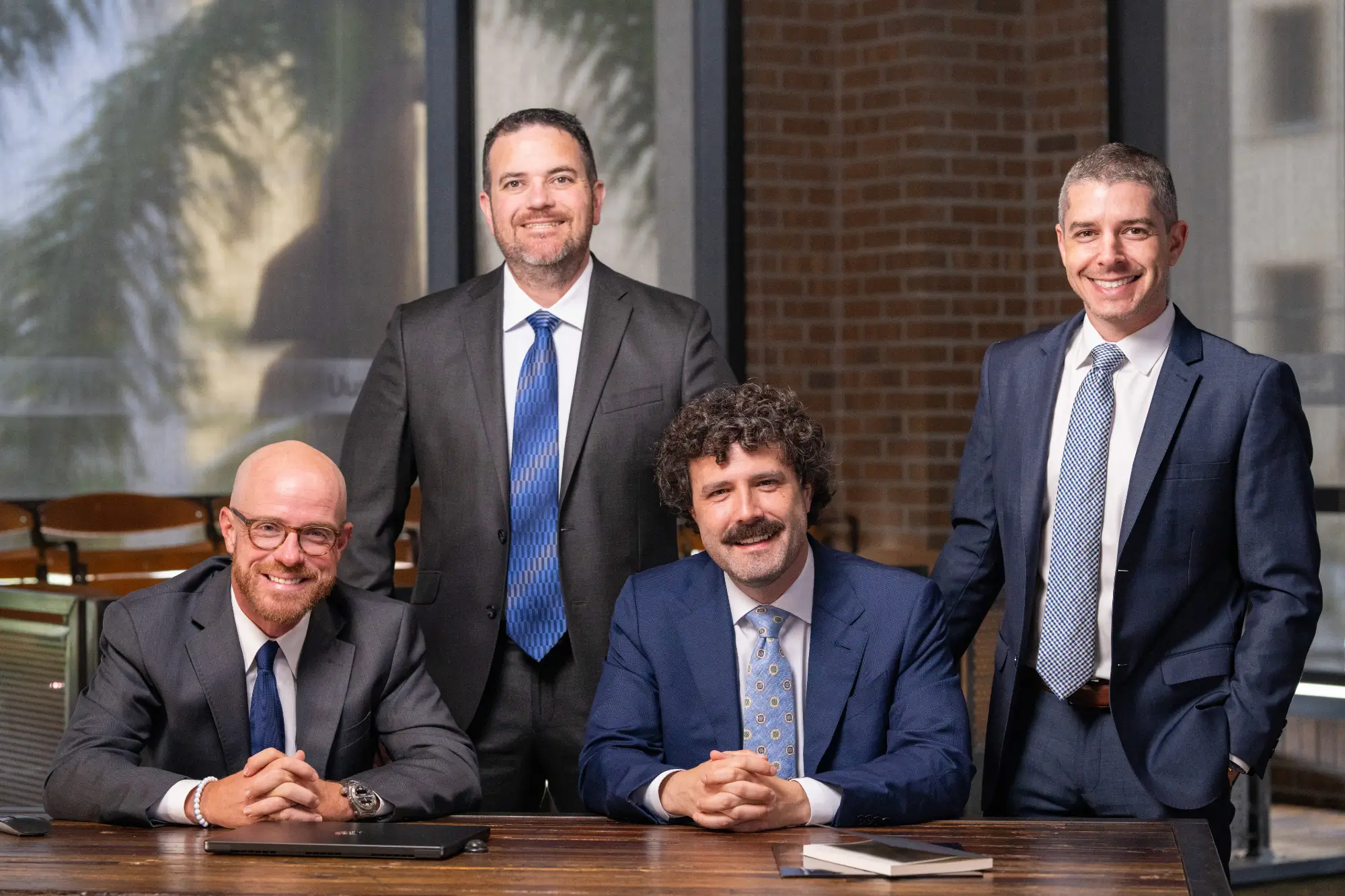While motorists are often at fault for pedestrian accidents, there are some instances in which pedestrians may share the fault for the injuries they sustain.
- Motorists are often assumed to be at fault in pedestrian accidents, but pedestrians may share responsibility in certain situations.
- Pedestrian right-of-way laws vary by state, but generally, pedestrians should use crosswalks and stay vigilant to ensure their safety.
- Motorists can be at fault due to negligence, such as distracted driving or failing to yield at crosswalks.
- Pedestrians might be at fault if they are impaired, jaywalking, or crossing outside designated areas, though this is less common.
Car accidents involving pedestrians can be serious, resulting in severe injuries and high damages. Because motorists are occupying a large vehicle, we often assume that they’re at fault. But are they always the party to blame in pedestrian car accident cases?
Our team of personal injury attorneys here at WHG can help you sort out who is liable for your pedestrian accident, as we have extensive experience in this area of law. To discuss your case with us, schedule a free consultation by calling (800) 320-HELP or submitting a contact form.
Understanding Pedestrian Right-of-Way Laws
In Florida, pedestrians are allowed to cross the street at any intersection, whether or not there is a marked crosswalk. Motorists are required to yield to pedestrians who are already in the intersection crosswalk.
If a pedestrian is crossing the street at a non-intersection, they must do so at a crosswalk. Motorists must also yield to pedestrians already occupying these types of crosswalks.
Pedestrian right-of-way laws can be confusing, and they’re different in every state. However, as long as you’re crossing in a crosswalk, waiting for a signal, and paying attention to your surroundings, you should be safe. Unfortunately, sometimes motorists don’t pay enough attention to pedestrians in crosswalks, resulting in accidents.
Situations Where Motorists May Be At Fault
Motorists are often at fault for accidents involving pedestrians simply because drivers don’t pay enough attention to their surroundings, especially outside of other vehicles. Vulnerable road users, such as pedestrians, motorcyclists, and bicyclists, are more easily overlooked.
In accidents with both pedestrians and motor vehicles, the most common cause of pedestrian accidents is human error or negligence. When a driver doesn’t act with the utmost care or doesn’t put safety first when behind the wheel, it’s easy to see how accidents can occur.
The most common causes of pedestrian accidents where motorists are at fault include:
- Distracted driving
- Speeding
- Drunk driving
- Aggressive or reckless driving (such as road rage)
- Running stop signs or red lights
- Turning right or left without yielding to pedestrians
- Not checking crosswalks before turning
- Not looking out for pedestrians in general
Circumstances Where Pedestrians May Be At Fault
It’s not common for pedestrians to be at fault for an accident involving a motor vehicle simply because of the size difference. Unless pedestrians purposefully throw themselves in front of the vehicle, it can be difficult to pin fault and liability on them. However, there are a few instances in which a pedestrian can be at fault for a pedestrian car accident.
The most common cause of pedestrian accidents in which a pedestrian is at fault includes some kind of substance abuse, whether it be drugs or alcohol. If a pedestrian is under the influence and not paying attention, they could stumble into the street and get hit by a car.
If a pedestrian isn’t in a crosswalk, it can still be difficult to pin full liability on them. However, jaywalking can make both the driver and the pedestrian at fault for an accident because they both exhibited negligent behavior. In some states, this will mean that the pedestrian won’t be able to recover as much in damages.
For example, if they’re deemed to be 40% at fault for the accident, they’ll only be able to receive compensation to cover 60% of their damages. But again, this is uncommon, and the motor vehicle driver will likely still hold most of the fault.
How is Fault Determined in a Pedestrian Car Accident?
Determining fault in car accidents can be complex and may differ depending on the state you’re located in. Generally, to determine fault, the circumstances of the accident will need to be not only explained but backed up with substantial evidence.
The police will put together an initial report with evidence from the scene of the accident, including photos, videos, personal statements, and witness statements. Then, your attorney and the insurance companies involved will delve deeper into the accident.
Your attorney will gather evidence that verifies your claims. For example, if you claim that the accident was caused by a driver who was speeding, your attorney may show pictures of tire marks indicating an abrupt stop. They may also showcase your medical bills and records to prove the link between the speeding accident and your injuries.
Shared Fault in Pedestrian Accidents
In some states, comparative negligence may come into play in car-pedestrian accidents. If both the driver and the pedestrian share fault for the accident, they’ll receive compensation accordingly.
This means that if you are 25% at fault for the pedestrian accident, the amount of compensation you could potentially receive is reduced by that much. Therefore, you could only receive 75%, or the amount that you’re not at fault.
Florida, however, is a no-fault state. This means that you can receive compensation no matter how much fault you share for the accident. Even if, as a pedestrian, you’re more than 50% at fault for your own injuries, you can still file a claim against your own insurance company for compensation.
Contact Werner, Hoffman, Greig & Garcia if You’ve Been Injured in a Pedestrian Accident
If you’ve been hit by a car as a pedestrian, please contact our team of experienced and passionate pedestrian car accident attorneys to learn more about filing a successful insurance claim. Contact us online or at (800) 320-HELP to schedule a free consultation as soon as possible after your accident.
Frequently Asked Questions About Pedestrian Accidents
What should I do immediately following a pedestrian accident?
Immediately following a pedestrian accident, you should seek immediate medical attention for your injuries. If you’re able to stick around at the scene of the accident, you should collect any evidence possible, such as photos and videos.
You can also speak with any witnesses and gather their contact information. Before you speak with any insurance companies, make sure to contact an experienced pedestrian accident lawyer to protect your claim from early damage.
How long do I have to file a claim after a pedestrian accident?
The amount of time you have to file a claim after a pedestrian car accident depends on the state you’re located in. In Florida, you have four years from the date of the accident to file a claim. However, it’s in your best interest to file a claim as soon as possible after the accident to preserve evidence.
Do I need a lawyer if I was involved in a pedestrian accident?
Hiring a lawyer is not required, but it will help to ensure you get more compensation for your damages. Insurance companies want to settle for as little as possible as fast as possible. With a lawyer, they’ll know that you mean business. Without a pedestrian accident lawyer, you risk getting less than you deserve in compensation.
What compensation can I recover after a pedestrian accident?
An injured pedestrian can receive compensation for both economic and non-economic damages. Economic damages include things like medical bills and lost wages, while non-economic damages refer mostly to pain and suffering.










